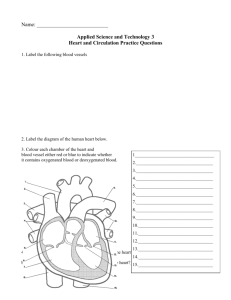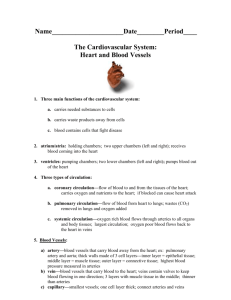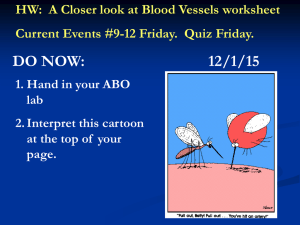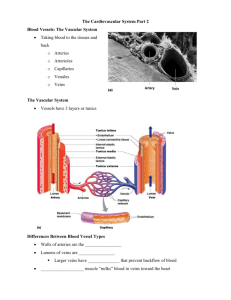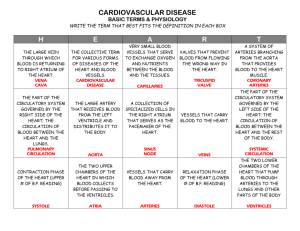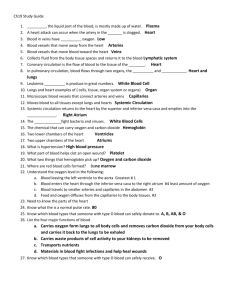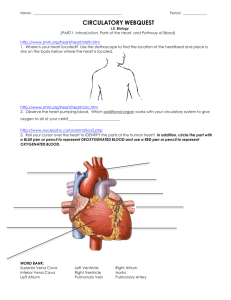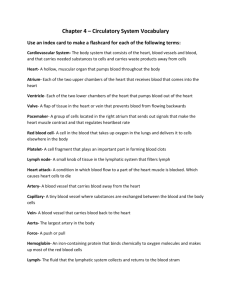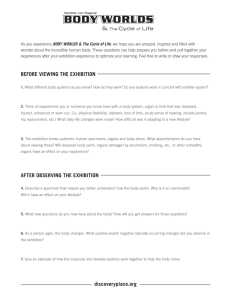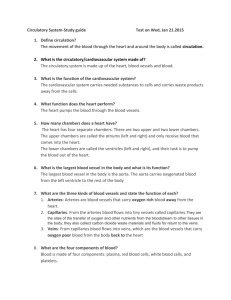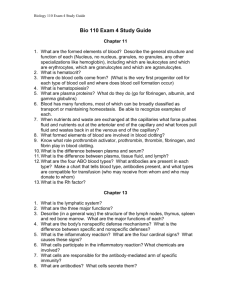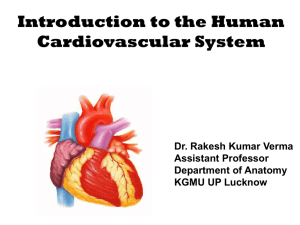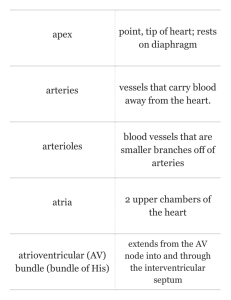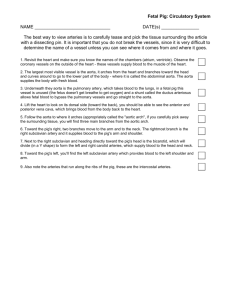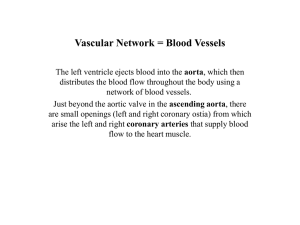16-1 Notesheet
advertisement
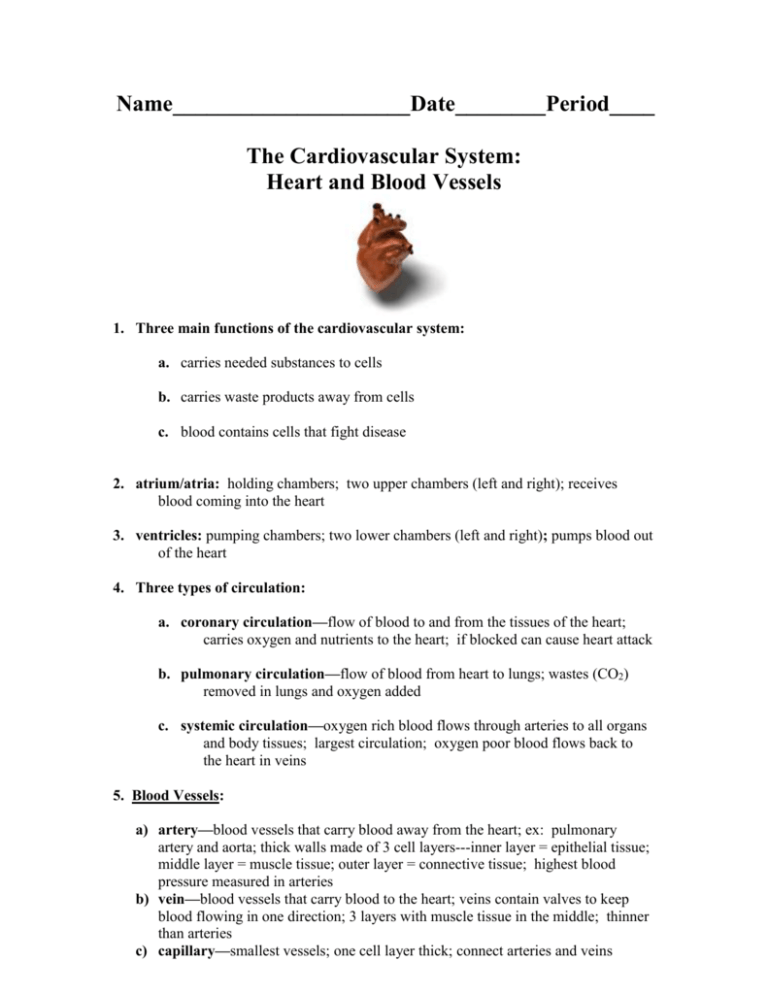
Name_____________________Date________Period____ The Cardiovascular System: Heart and Blood Vessels 1. Three main functions of the cardiovascular system: a. carries needed substances to cells b. carries waste products away from cells c. blood contains cells that fight disease 2. atrium/atria: holding chambers; two upper chambers (left and right); receives blood coming into the heart 3. ventricles: pumping chambers; two lower chambers (left and right); pumps blood out of the heart 4. Three types of circulation: a. coronary circulation—flow of blood to and from the tissues of the heart; carries oxygen and nutrients to the heart; if blocked can cause heart attack b. pulmonary circulation—flow of blood from heart to lungs; wastes (CO2) removed in lungs and oxygen added c. systemic circulation—oxygen rich blood flows through arteries to all organs and body tissues; largest circulation; oxygen poor blood flows back to the heart in veins 5. Blood Vessels: a) artery—blood vessels that carry blood away from the heart; ex: pulmonary artery and aorta; thick walls made of 3 cell layers---inner layer = epithelial tissue; middle layer = muscle tissue; outer layer = connective tissue; highest blood pressure measured in arteries b) vein—blood vessels that carry blood to the heart; veins contain valves to keep blood flowing in one direction; 3 layers with muscle tissue in the middle; thinner than arteries c) capillary—smallest vessels; one cell layer thick; connect arteries and veins Blood Vessels Directions: Each of the following statements refers to arteries, veins, or capillaries. In the blank provided, write the appropriate blood vessel(s). (There is a section just like this on the chapter test.) 1. are one cell layer thick capillary 2. contain a layer of smooth muscle artery and vein 3. carry blood away from the heart artery 4. contain valves to prevent blood from flowing backward vein 5. connect between two of the blood vessels capillaries 6. measure the highest blood pressure artery 7. allow gases and nutrients to pass through the vessels’ walls capillaries 8. carry blood to the heart vein 9. are the thickest of the 3 blood vessels artery 10. aorta artery Blood Pressure Directions: Explain or define the following 11. blood pressure—force of blood on the vessel walls 12. sphygmomanometer—instrument used to measure blood pressure 13. systolic—top number----measures ventricular contraction 14. diastolic—bottom number----measure ventricular relaxation (Example of blood pressure reading: 110/70)


